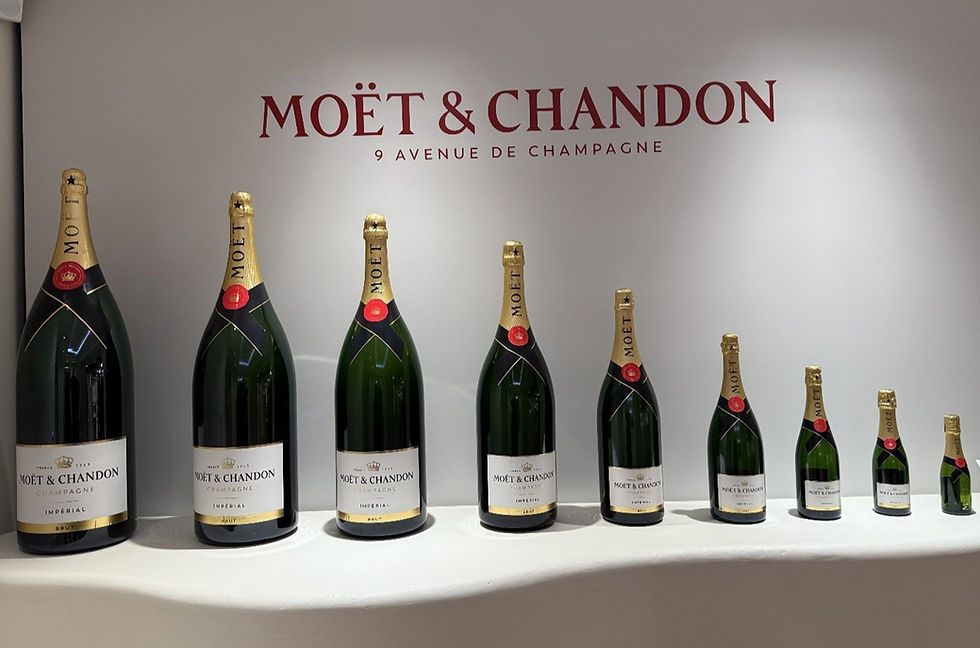Want Great Wine and a Down-to-Earth Vibe? Visit Barbaresco!
- Marla
- Sep 22
- 4 min read

Barbaresco, along with its more famous cousin Barolo, are the two iconic, prestigious red wines that helped put Italy’s Piedmont wine region on the map. Both are from the Langhe area of Piedmont, made from the Nebbiolo grape, and subject to strict rules.
But Barolo, at a higher elevation and grown on steep hills, is a wine seen as more “powerful” with higher tannins. It often needs to age for years before it is considered ready to drink. Barbaresco, grown at slightly lower elevations and with warmer temperatures, is seen as more “elegant” with lighter tannins. This is why Barbaresco is typically called the “queen of wines” and Barolo the “king of wines.”
There are other differences, as well. The Barolo wine region is three times larger than Barbaresco and consists of 11 villages compared to Barbaresco’s four. And while neither region, just an hour southeast of Turin, is overrun with tourists, Barbaresco comes across as quieter, more laid back, and more off the beaten track.
Of the approximately 1,000 wineries in Piedmont, only about 40 are in Barbaresco. The wineries are mainly small, family-owned places. Many of them welcome visitors, but the area is so undeveloped from a marketing standpoint that it can be difficult to determine how to visit the region. As we’ve noted previously, it really helps to have a knowledgeable tour guide for this area.
A great introduction to Piedmont’s wine region can and should include both Barolo and Barbaresco, which are near each other and can be visited together in one day. But we took a deeper dive into each region and also devoted one entire day just to Barolo and another one to Barbaresco.
For our trip to Barbaresco, we opted for a private tour with Langa Wine Tour, operated by winemaker brothers Marco and Giovanni, who also run their family winery, Cascina Galarin. We used Langa for our introductory tour of Piedmont, as well. We were very happy with both tours.
All of the wineries we visited in Barbaresco were tiny, unassuming, and family-run with no fancy, designated tasting room. All of our tastings were private and informal, in the production area or cellar. Talk about authentic!
Renato Fenocchio
The first winery we visited was Renato Fenocchio, in the village of Neive. The farm was founded in 1993; for the first eight years the family sold the grapes they grew to earn money to begin their own wine production, which is certified organic. The winery doesn’t accept a lot of visitors but opens its doors to Marco and Giovanni when they ask since they are colleagues. Our guide Milva, Renato’s wife, told us that when she was younger and worked in the vineyards, she’d take her babies with her in a basket as she had no babysitter.
After a tour of the facilities, we sat down to wine tasting in one of the storage areas, surrounded by equipment as well as wine bottles on the walls and ceiling. We sampled, accompanied by the local breadsticks:
Langhe Arneis, the winery's only white wine 😊++
Vino Rosso Suma Pa, a lighter red, from the Ruchè grape, indigenous to Piedmont 😊++
Langhe Nebbiolo 😊😊
Barbaresco from the Rombone region 😊😊+
Barbaresco from the Starderi region, with different soil and a Nebbiolo clone 😊++

Marco then took us to a local restaurant, Osteria taStè in Tre Stelle, for lunch, which.
features panoramic views of the countryside and excellent food. We ate outside overlooking the vineyards.
La Contea and Barroero
Giovanni picked us up after lunch to continue our tour. Our next visit was actually to two wineries that work cooperatively and share facilities in Neive, La Contea and Barroero. They are both so small that, last time I checked, their websites were still under construction. But size didn’t matter; these wines shone.
Our guide Alessandro was from La Contea. His grandfather used to make wine for his personal consumption; his father started the winery, named after his former restaurant.
We toured the little facility and then sat down in the middle of the barrels. We sampled:
Barroero Langhe Chardonnay 😊😊
Conte Barro, a vino rosso made from the indigenous Grignolino grape that the two wineries make together 😊++
La Contea Barbera D’Alba Superiore 😊++
Barroero Langhe Nebbiolo Mansun 😊😊
La Contea Barbaresco Gallina (named after the vineyard) 😊😊
La Contea Caplin Barbera D’Alba Superiore, made by Alessandro's father in 1999 😊😊

Alessandro also pulled some wine directly from a nearby barrel for a tasting of a wine that in several years will be a Barbera. Fun!
Piercarlo Culasso
Our final great Barbaresco winery with a down-to-earth vibe was Piercarlo Culasso in the village of Faset. It’s typical of many of the wineries in the Piedmont region. The family cultivated the vineyards for generations, selling the grapes to other wine producers, and only recently decided to keep their grapes and make their own wine. Our guide Martina is Piercarlo’s daughter.
After a tour of the production facility, we sat down for a tasting, again among the barrels and tanks, accompanied by breadsticks, cheese, and hazelnuts.

We sampled:
Langhe Nebbiolo 😊++
Barbaresco Faset 2021 😊😊
Barbaresco Faset 2020 (a vertical tasting)😊😊
Barbaresco Faset Duesoli 😊😊

So if you want great wine and a down-to-earth vibe, we hope you’ll visit Barbaresco. Alla nostra salute! (“to our health!”)
What other wine regions have both great wines and a down-to-earth vibe? Weigh in; we’d love your advice. We’re at info@winewithourfamily.com.
If you enjoyed this article, visit our website and check out some of our related ones:




Comments